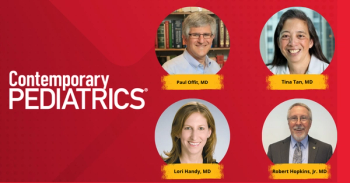
Which cases of in-toeing require referral?
Primary care physicians can manage the vast majority of children with in-toeing disorders. Only a few require casting or surgery, but be careful because about 15% actually have another diagnosis, according to a recent study.
Primary care physicians can manage the vast majority of children with in-toeing disorders. Only a few require casting or surgery, but be careful because about 15% actually have another diagnosis, according to a recent study.
At a session of the American Academy of Pediatrics annual meeting held last week in Orlando, Florida, researchers presented
The investigators found that 85% of the referred cases did, in fact, have an in-toeing problem, but that 95% required no care beyond that provided by their pediatricians. Most cases resolved spontaneously without treatment. None required casting or surgery.
Of the referred cases, almost half (43%) demonstrated internal tibial torsion (TT); 16% demonstrated internal femoral torsion (FT); 8% had metatarsus adductus (MTA); and 17% had a combination of TT, FA, or MTA. Three-quarters were discharged from care after an initial consultation, and 18% were discharged after the first follow-up visit. Only 8% required more than 2 office visits.
Fifteen percent of the referrals didn’t have in-toeing at all. Other diagnoses included flexible flat feet (8%), physiologic genu varum (1%), and tight heel cords and cerebral palsy (2%). Three percent were completely normal.
The average age of the patient referred was 4 years, but the children ranged in age from 2 months to 13 years. More of the children were girls (59%) than boys (41%).
According to the
To get weekly clinical advice for today's pediatrician,
Newsletter
Access practical, evidence-based guidance to support better care for our youngest patients. Join our email list for the latest clinical updates.







